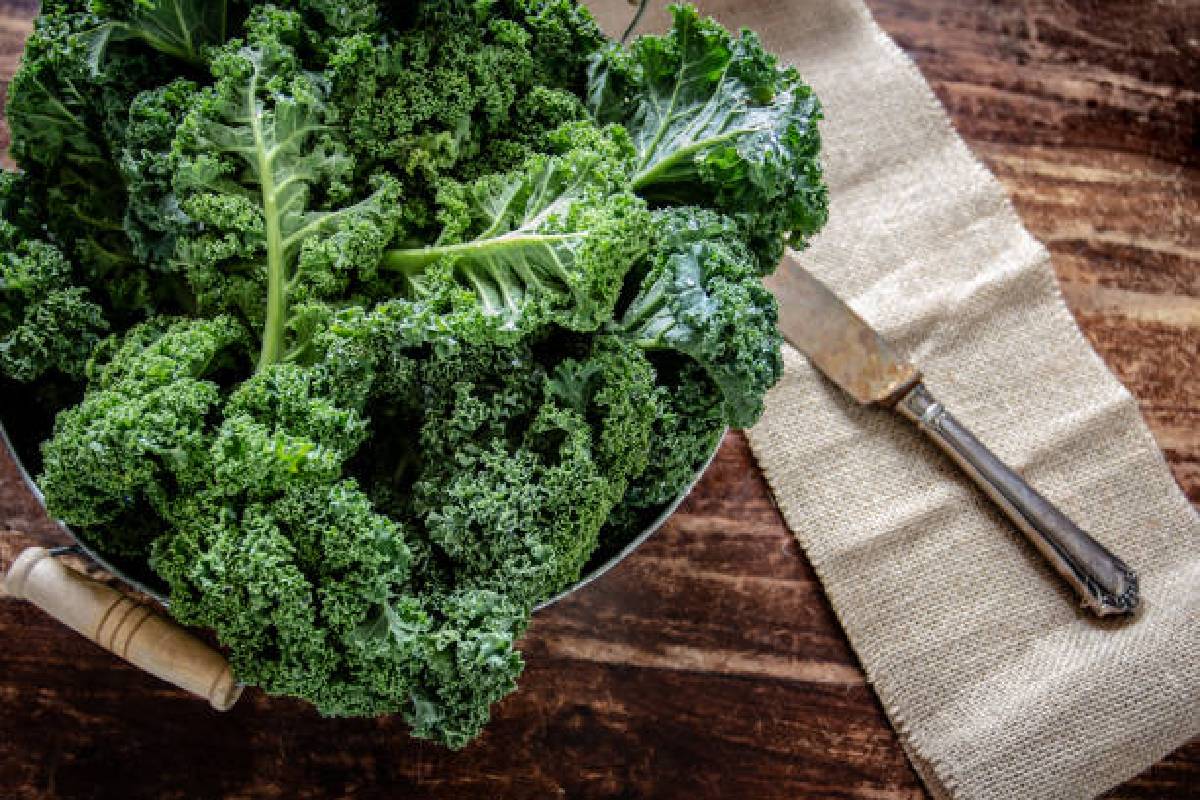Kale is the king of all the incredibly nutritious greens. One of the healthiest and most nourishing plant foods available, without a doubt. It is bursting with healthy substances and some potent anti-inflammatory agents.
Here are Some Health Advantages of Kale Backed by Research
1. Kale Is Among The Most Nutrient-Dense Foods on The Planet
The popular vegetable kale belongs to the cabbage family. It is a cruciferous vegetable, the same family as Brussels sprouts, cabbage, broccoli, cauliflower, and collard greens. It comes in a wide variety of varieties. The shape of the leaves might be smooth or curly, and they can be either green or purple. Curly kale, also known as Scots kale, is the most popular variety. It features green, curly leaves and a stiff, fibrous stem.
Approximately 67 grams or 2.4 ounces of raw kale, or one cup, contain
Vitamin A: 206% of the DV (from beta-carotene)
Vit K: 684% of the DV
Vitamin C: 134% of the DV
Vit B6: 9% of the DV
Manganese: 26% of the DV
Calcium: 9% of the DV
Copper: 10% of the DV
Potassium: 9% of the DV
Magnesium: 6% of the DV
Additionally, it has 3% or more of the Daily Value (DV) for thiamin, riboflavin, niacin, iron, and phosphorus.
This has 33 calories overall, 6 grams of carbohydrates, 2 of which are fiber, and 3 grams of protein.
Alpha-linolenic acid, an omega-3 fatty acid, makes up most of the fat in kale’s relatively low-fat content.
It is one of the most nutrient-dense foods available due to its meager calorie count. A great approach to significantly boost your diet’s overall nutritious content is to consume more kale
2. It Is an Excellent Source of Vitamin C
Vitamin C is a crucial water-soluble antioxidant that performs various essential tasks in the body’s cells. For instance, collagen, the body’s most prevalent structural protein, cannot be produced without it. Almost 4.5 times as much vitamin C as spinach is found in kale, making it significantly more nutritious than most other veggies. Kale is one of the finest sources of vitamin C on earth. A cup of raw kale has more vitamin C than an entire orange.
3. Kale Is Loaded With Powerful Antioxidants Like Quercetin and Kaempferol
Similar to other leafy greens, kale has a high antioxidant content. Beta-carotene, vitamin C, different flavonoids, and polyphenols are some.
Antioxidants are chemicals that aid in preventing the body’s oxidative damage caused by free radicals. It is thought that oxidative damage is one of the leading causes of aging and several diseases, including cancer.
However, many chemicals that also happen to be antioxidants serve other crucial purposes. Included are the flavonoids quercetin and kaempferol, which are present in kale in relatively high concentrations.
In test tubes and on animals, these chemicals have been widely investigated. Strong heart-protective, blood pressure-lowering, anti-inflammatory, antiviral, anti-depressant, and anti-cancer activities are a few of their many potent properties.
4. By lowering cholesterol, kale may lower the risk of developing heart disease.
Bile acid sequestrants, which are present in kale, help reduce cholesterol levels. Over time, this could result in a decreased risk of heart disease. According to one study, consuming its juice daily over 12 weeks improved antioxidant status, dropped LDL levels by 10%, and elevated HDL (the “good”) cholesterol by 27%.
One study found that heating it significantly boosts the bile acid binding effect. Kale that has been steam-cooked is 43% more potent than the cholesterol-lowering medication cholestyramine.
5. Kale Is One of the Best Sources of Vitamin K in the World
One raw cup of kale has about 7 times the daily recommended amount of vitamin K, making it one of the world’s greatest sources of this vitamin. It contains vitamin K1 instead of vitamin K2, a distinct type of vitamin. Fermented soy meals and specific animal products contain K2. It guards against osteoporosis and heart disease.
6. It Contains Several Cancer-Fighting Ingredients
Kale has many substances that are thought to have anti-cancer preventive properties. One of these is sulforaphane; a compound demonstrated to aid in the molecular battle against cancer development. Indole-3-carbinol, another compound thought to aid in cancer prevention, is also present. Despite conflicting data, studies have suggested that cruciferous vegetables may considerably lessen the risk of several malignancies.
Also Read – https://herbalrelm.com/2022/11/02/health-benefits-of-oregano/
